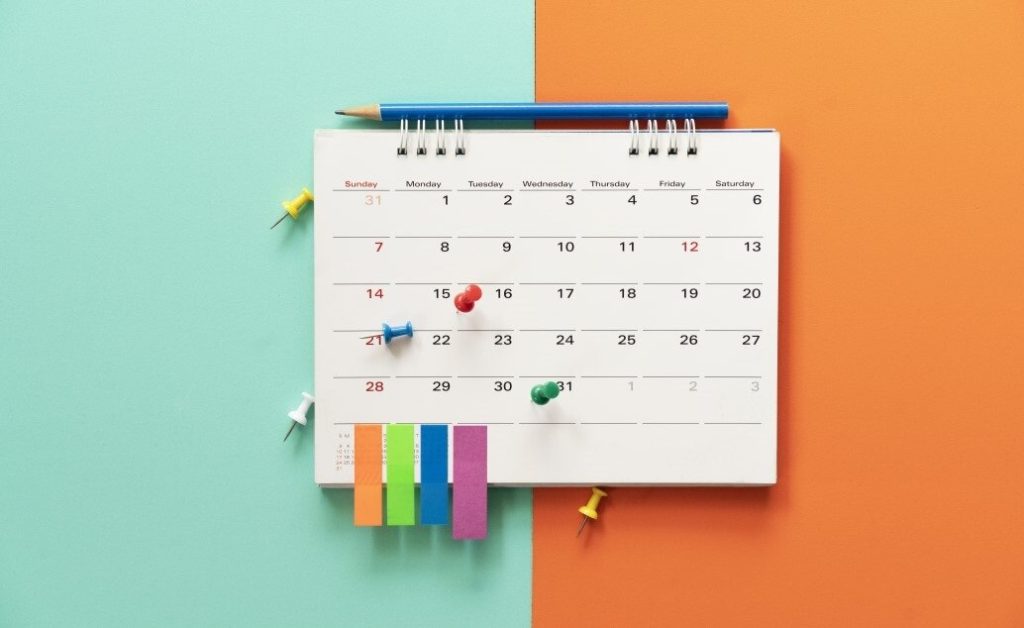
When the calendar first flipped to May, my mind started to drift toward summer. Sure, I knew what I still needed to accomplish and, of course, finals were still ahead of us. But it was easy to start thinking about taking days off, sleeping in and traveling.
And, if you’re like me, it’s hard to let go of summer and start planning for the school year. But as we enter the final days of break, it’s time for teachers to start shifting from “summer mode” to “school mode.”
This is my second summer as a teacher, and in that time, I’ve developed a routine to get my mind focused back on school while enjoying what little bit of summer I still have left. Here’s what’s helped me.
1. Take one final trip or vacation
Whether it’s a week-long respite or just a weekend trip, make sure you take a solid vacation before the grind starts. As I write this, I’m touring the Pacific Northwest and doing some hiking and other touristy things. Last summer, I traveled to New England for vacation and finished the summer off with a weekend trip to St. Louis.
I’ve found that I need a refreshing vacation to end my summer right and recharge my battery. On top of my teaching responsibilities, I’m in charge of boys’ and girls’ tennis as well as the student publications. I rarely get a day off during the school year, so having a week where I can focus on being with my wife and just having fun is crucial to starting the school year off on the right mindset. It can take weeks – even months – to decompress from the previous school year, so a stress-free late summer vacation can prove to be vital.
2. Carve out time to plan school work
Some teachers are wired in such a way that their workload doesn’t stop when the school year does. Summer just means more time to get done what they were already doing. Some attend professional development seminars or work a second job, while others lead training sessions or take classes of their own.
If you haven’t started planning for the upcoming school year yet, it’s time to start. Most schools will start back up in early or mid-August, so the final weeks of July can be a busy time.
I try to carve out an hour or two at least three or four days per week to examine my curriculum, plan lessons, review pacing for the upcoming school year and make a rough outline of the timeline that I plan to follow. I know that it’s subject to change, but it’s nice to have a visual of what the academic year will look like.
I use the Google calendar template because it allows you to customize each month and enter the rough plans for each day. (Think back to college when you were given a semester-long syllabus. This is basically the same idea.) I print these off for my students when we read novels, and it provides a rough reading schedule.
Even if you don’t end up giving the template to your students at the start of the year, planning things out in calendar form can help you visualize where you want to land each day, week and month of your semesters.
3. Start waking up earlier
And for that matter, you might as well start going to sleep earlier as well. The first few days of school are taxing, so you need as much energy as possible.
Yes, I know. We want to sleep in as long as we can, and if there’s no real reason to get up, why not stay in bed? But, once the school year rolls around, you’ll have to wake up around 5:30 or 6 am every day anyway, and you’ll be expected to be sharp from the beginning. We’re not afforded a week or two to get acclimated to the early days, so you’ll want to get your body adjusted now.
If you don’t have a summer job, use those extra hours to get some school planning done. You can have all of that knocked out before you even eat breakfast, and then you’ll have the whole day to relax.
4. Create classroom culture
Many teachers enjoy getting back into their classrooms to decorate and get the classroom aesthetic ready for the upcoming year. Whether it’s physical or philosophical, it’s time to start creating the environment you want for your classroom. If something worked the previous year, carry it over to the next. If something didn’t work, scrap it and start thinking of ways to improve.
Take a look at your class rosters and get to know your students as best as you can. The first few days are vital to setting the culture for the whole year. Habits set in quickly, so if you want things to work differently than the previous year, use the first few days to set that tone.
Gear up, because the school year will be here soon!
The best way to get prepared for a new school year is to hone your teaching skills. Explore all our graduate-level programs in education to find the one that fits your needs.

